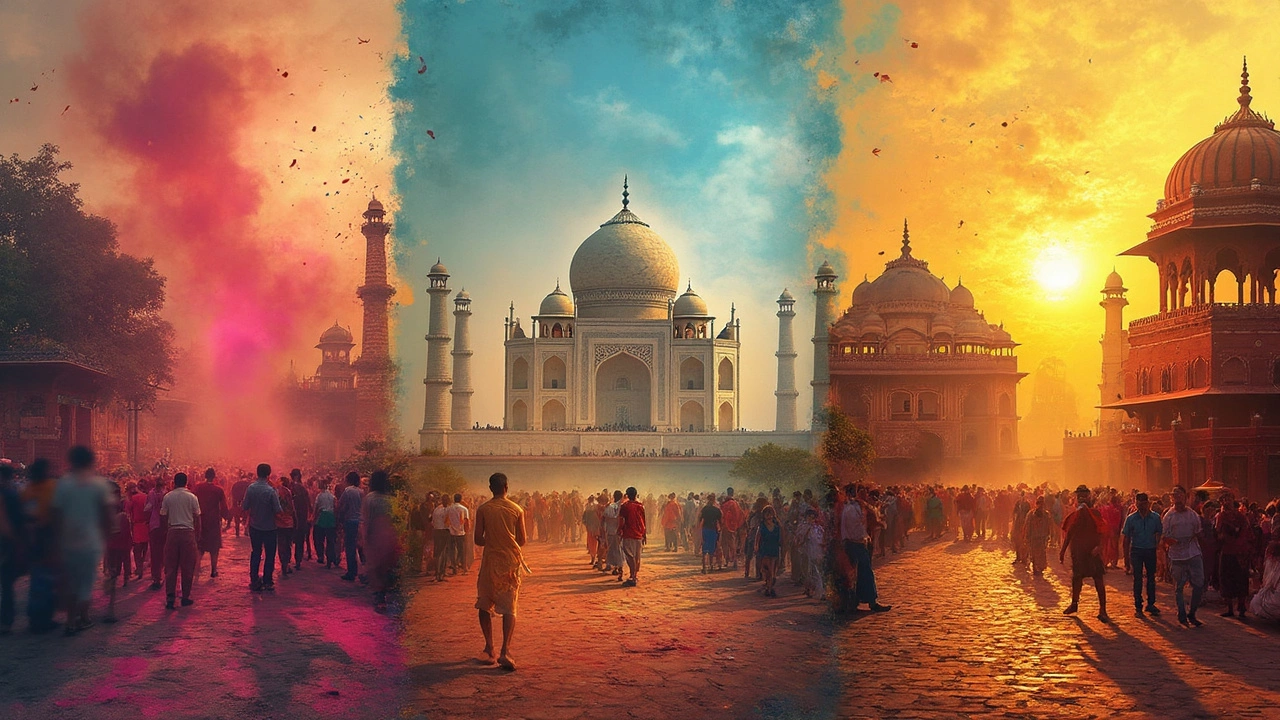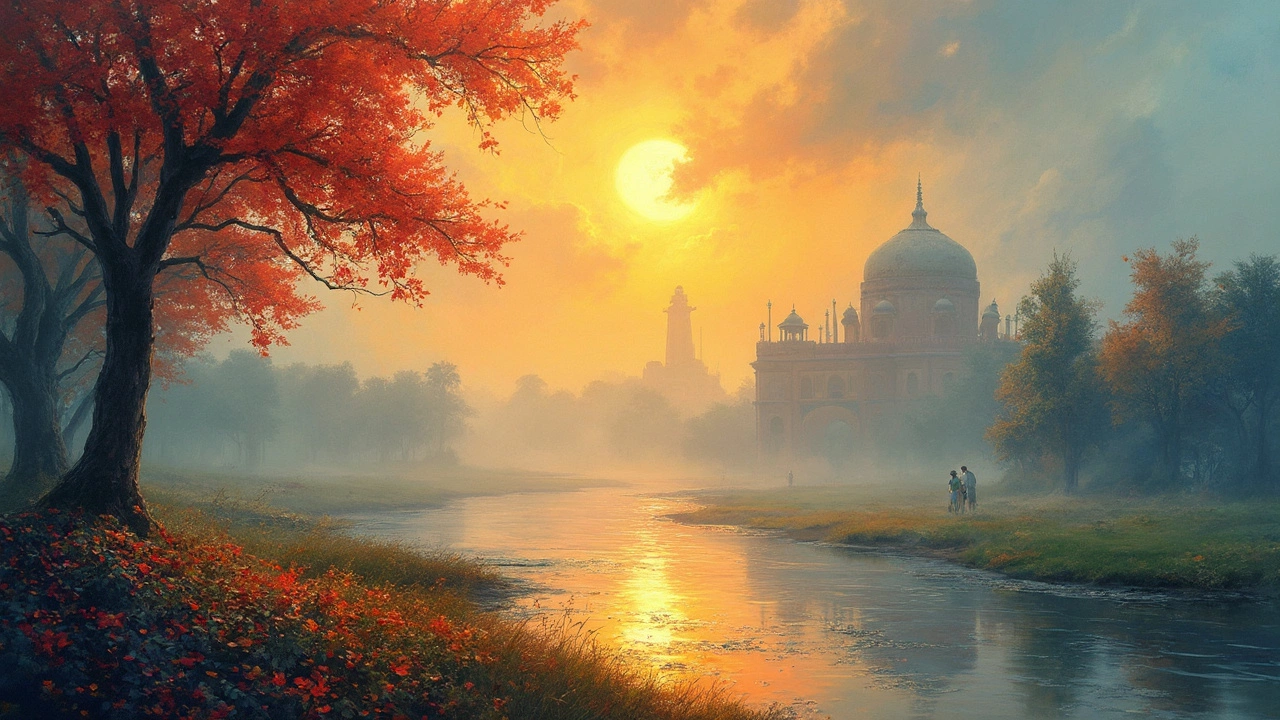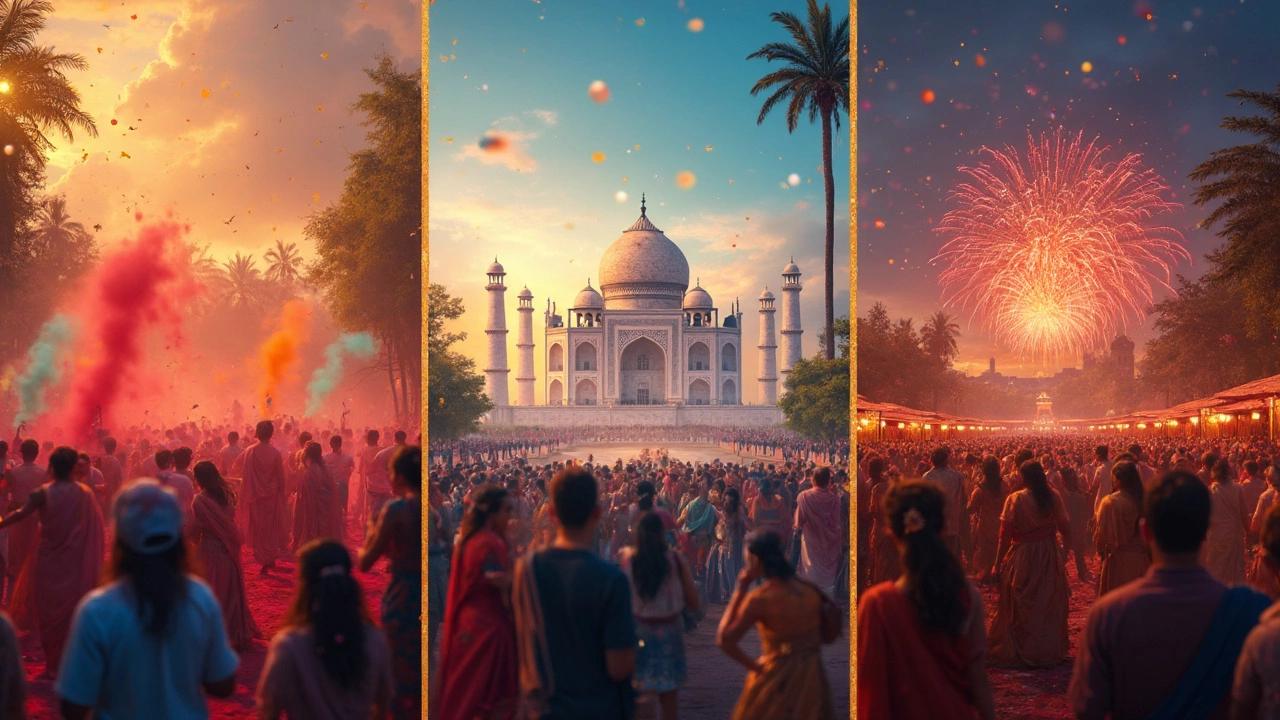SEARCH
Best Month to Visit the Golden Triangle in India


So you're thinking of exploring the famous Golden Triangle in India—fantastic choice! This travel circuit connects Delhi, Agra, and Jaipur. Each city has its own unique vibe and an overwhelming amount of history and culture to soak in. But the big question is: when's the best time to visit?
While the Golden Triangle is technically a year-round destination, there's no denying that picking the right month can make your trip way more enjoyable. You want your visit peppered with cool breezes rather than drenched in sweat, right?
October to March is a sweet spot. During these months, the weather is cool and way more comfortable for sightseeing. Imagine wandering around the majestic Taj Mahal without worrying about turning into a puddle. You can explore vibrant Jaipur markets and historic forts in Delhi without overheating too. Perfect if you're keen on long walking tours and outdoor adventures!
- Introduction to the Golden Triangle
- Why Timing Matters
- Best Month for Sightseeing
- Weather: What to Expect
- Insider Tips for Travelers
Introduction to the Golden Triangle
The Golden Triangle India is one of the most popular tourist routes in the country, and for good reason. Linking Delhi, Agra, and Jaipur, this triangle presents a condensed version of India's diverse cultural tapestry. Whether you have a fascination with history or an enthusiasm for architecture, you're bound to love what each stop has to offer.
Delhi: The Bustling Capital
First on the list is Delhi, the bustling capital city, where centuries-old history meets modern life. From the grandeur of the Red Fort to the charm of Chandni Chowk, Delhi is a vibrant introduction to Indian culture. Visitors can explore its numerous museums, diverse culinary scene, and chaotic yet captivating markets.
Agra: Home of the Taj Mahal
Agra is best known as home to the world-renowned Taj Mahal, an exquisite example of Mughal architecture that draws millions annually. But Agra isn't a one-trick pony. It also houses the impressive Agra Fort and the abandoned city of Fatehpur Sikri, each with its own slice of history.
Jaipur: The Pink City
Finally, there's Jaipur, famously known as the Pink City because of its terracotta buildings. Jaipur dazzles with its palaces and forts, like the City Palace and Amber Fort. The bustling bazaars here are perfect for picking up handcrafted textiles and jewelry.
| City | Main Attraction | Highlight |
|---|---|---|
| Delhi | Red Fort | Historical sites and markets |
| Agra | Taj Mahal | Mughal architecture |
| Jaipur | Amber Fort | Forts and palaces |
This tourism circuit is not just about the destinations; it's about the journey through time and experiences. The best part? These cities are well-connected by road and rail, making travel between them a breeze. So, whether you're starting your adventure in Delhi or wrapping it up in Jaipur, the Golden Triangle offers an India experience packed with unforgettable moments.
Why Timing Matters
So, why does timing really matter when visiting the Golden Triangle in India? First off, we're talking about a place with three cities, each with its distinct character, experiences, and climate. Knowing when to go can totally change your travel experience.
Weather Considerations
The weather in North India plays a huge role in your travel plans. From late October to March, temperatures are cool and pleasant, perfect for walking tours and exploring the rich history and culture. You wouldn't want to check out the Taj Mahal in May when the sun's relentless fury could zap your energy in minutes. By planning your trip between October and March, you’re ensuring a more comfortable trek through these iconic locations.
Festivals and Events
This period is also packed with vibrant festivals, adding an extra layer of excitement to your visit. Think Diwali in Delhi with all its lights and merriness, or Jaipur's Elephant Festival in March—a sight you definitely don't want to miss. Timing your visit around such events can make your trip more memorable.
Crowd Levels and Pricing
Visiting the Golden Triangle during off-peak seasons might save you some cash but expect an almost unbearable heat from April to June. Not ideal. During peak season, from October to March, places are more crowded, but it is worth every penny for the vibe and the weather. Plus, who wants an empty market in Jaipur?
Conclusion
Choosing the right month impacts everything, from the mood in the air to the photos you'll snap. If being around other tourists or spending a little extra is not your cup of tea, then weigh the pros and cons and decide what's important for you. But most importantly, enjoy every moment and immerse yourself in the history and culture that the Golden Triangle offers.

Best Month for Sightseeing
When it comes to experiencing the Golden Triangle in India, let's be real—a trip through this iconic circuit is much more pleasant when you're not battling the scorching summer heat or relentless monsoon rains. So what's the best month to pack your bags and head out?
October to March: Perfect Timing
Among seasoned travelers and experts, the period from October to March is often hailed as the best time for sightseeing. During these months, you can expect mild weather, clear skies, and the ideal conditions for exploring historical sites. Cool mornings evolve into comfortably warm afternoons, making it perfect for long days spent exploring some of North India's most stunning landmarks.
In October and November, you also get to witness the festivals like Diwali in Delhi, which lights up the city with joy and festivities. Fast forward to March, and you might catch the tail end of Holi, the festival of colors, in Jaipur. These events add an extra layer of magic to your journey.
Why Weather Matters
Think of Delhi’s diverse landscapes followed by a visit to the exotic Agra for the majestic Taj Mahal, and then on to the Pink City of Jaipur. Sounds dreamy, doesn’t it? But trust me, experiencing it with sweat rolling down your back isn’t the most comfortable. Cool weather enhances everything from photography to just having a pleasant walk.
The beauty during these months is that temperatures range from around 15°C (59°F) to 25°C (77°F) across the three cities, making it ideal not just for internationals but locals as well. Rain is rare, so it triumphed over those muggy months.
A Few Dates to Mark
- Diwali: Generally falls between October and November. An epic time for cultural immersion.
- Holi: Celebrated in March, renowned for its playful vibe and vibrant colors.
- Winter Period: December through January is a bit colder with temperatures occasionally dropping to 8°C (46°F). Bring an extra layer just in case!
Is the trip feasible during different months? Absolutely! But for the prime experience, the cooler months from October to March simply can’t be beat. You’re bound to enjoy the wonders of the Golden Triangle without the weather getting in your way.
Weather: What to Expect
If you're planning to hit the Golden Triangle India, understanding the weather is a game-changer. This circuit covers a decent geographic spread, so variations in temperature occur, but understanding the general conditions will help you pack right and plan accordingly.
October to March: The Goldilocks Zone
These are the prime months to visit. The days are warm but not scorching, with temperatures ranging between 10°C and 25°C. It’s perfect for walking around historic sites like the Taj Mahal or the Jaipur forts. You might feel a tad cold in the mornings and evenings, so a light jacket wouldn't hurt.
April to June: Bring the Sunscreen
As you move into the summer months, it gets hot, reaching up to 45°C. Sightseeing can be sweaty work, and you might find yourself gravitating towards AC havens like malls or cafes. Hydration and sunscreen are your best friends during this period.
July to September: The Monsoon Miracle
Monsoon can be unpredictable. While the rain cools things off considerably, it does bring humidity and the occasional logistical hiccup. Expect some scenic views after a downpour, with greenery popping all around. Remember, heavy showers might disrupt travel plans, so flexibility is key.
To wrap it all up, the best month Golden Triangle travelers usually gravitate towards is November, striking a balance between comfortable weather and fewer monsoon disruptions. Naturally, your activities and preferences might sway you in a different direction, but hey, that's part of the adventure!

Insider Tips for Travelers
Exploring the Golden Triangle India is an exciting journey, but having some insider tips can make it smoother and even more memorable. Here’s what seasoned travelers have found helpful.
Plan Your Travel Wisely
The distances between Delhi, Agra, and Jaipur aren’t large, but India's traffic can surprise you. A train is a comfortable way to travel, and Indian Railways is known for its extensive network. Booking tickets in advance is smart, especially if you're traveling between October and March.
Dress Appropriately
Respect the local culture by dressing modestly, particularly when visiting temples and historical sites. Cotton clothes are ideal for the climate, being both cool and comfortable.
Bargain Like a Local
Whether you’re in Delhi markets or Jaipur bazaars, bargaining is part of the deal. Start at half the asking price and don't be afraid to walk away if it's too steep. Often, sellers will offer a better rate.
Stay Safe
While the Golden Triangle is generally safe, it’s always good to stay vigilant. Use registered transport services and keep your valuables close. Having a local SIM card ensures you stay connected; SIM cards are available at airports and major shops.
Don’t Miss the Street Food
From Delhi’s spicy chaat to Jaipur’s kachori, street food is a must-try. To avoid 'Delhi belly,' stick to places bustling with locals, which often indicates good turnover and freshness.
Enjoy Festivals
If you time your visit right, you can catch some fantastic local festivals. Holi, the festival of colors, usually in March, offers a unique experience with lively celebrations.
| City | Travel Time (Train) | Notable Site |
|---|---|---|
| Delhi to Agra | 2-3 hours | Taj Mahal |
| Agra to Jaipur | 4-5 hours | Hawa Mahal |
| Jaipur to Delhi | 4-5 hours | India Gate |